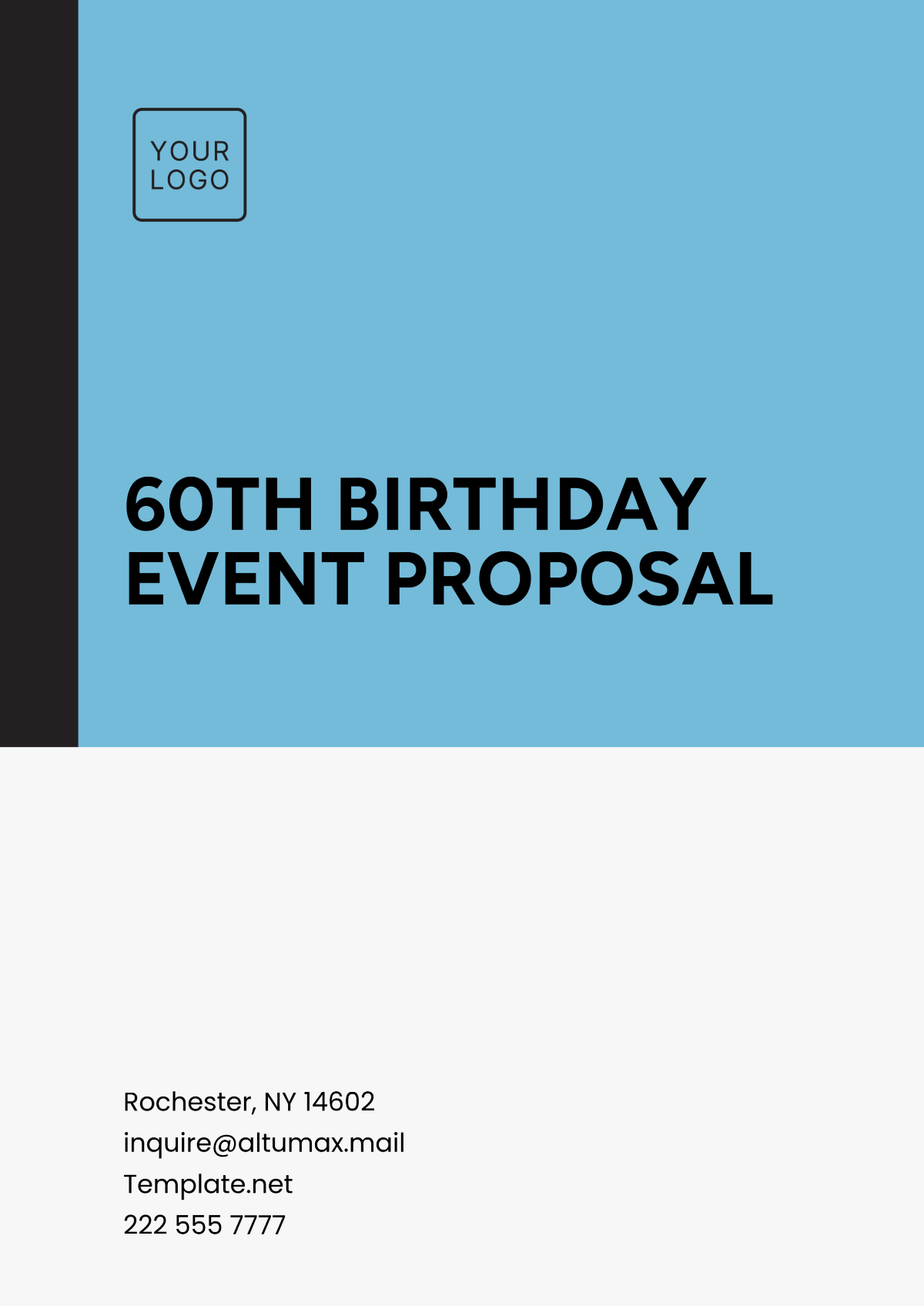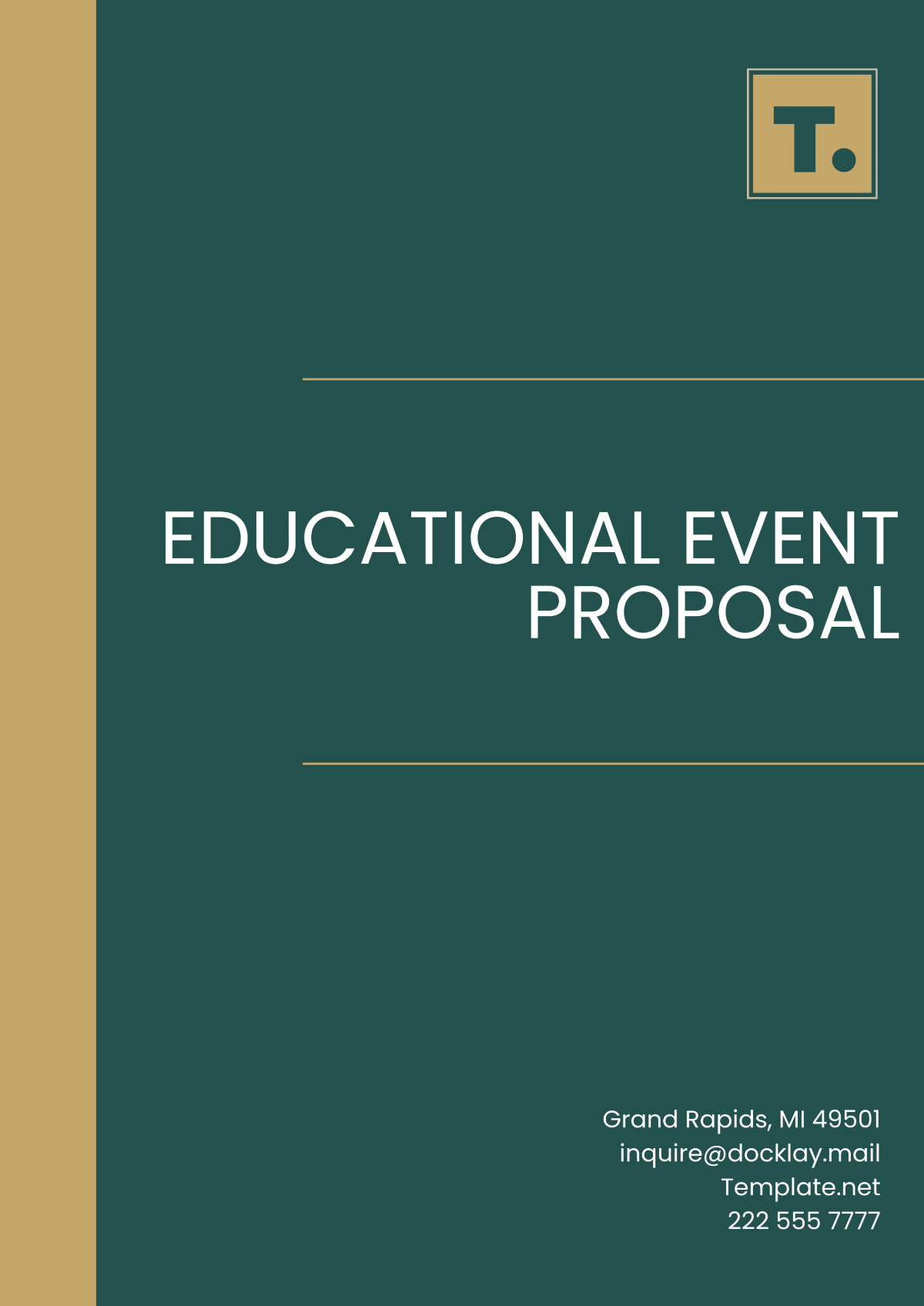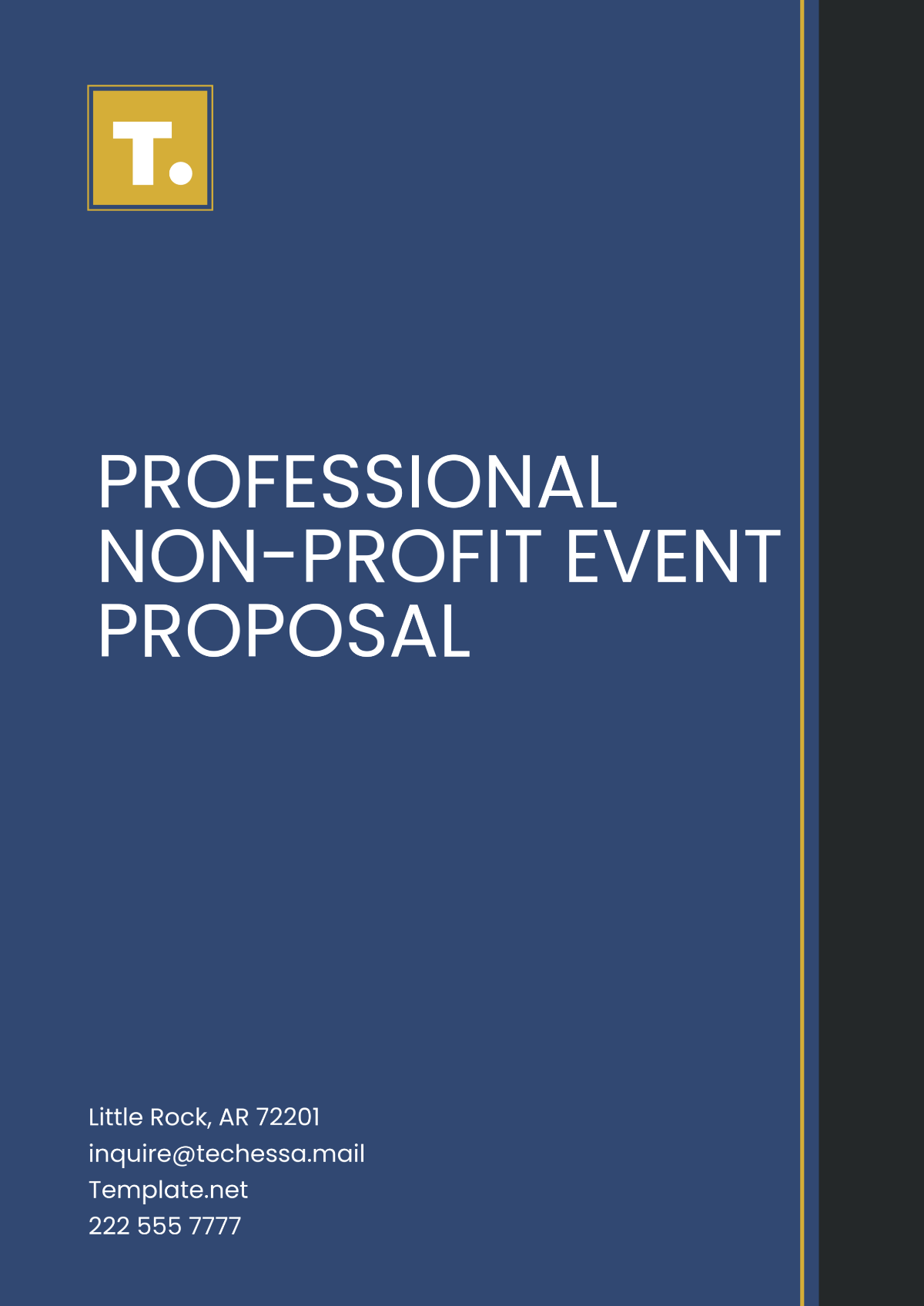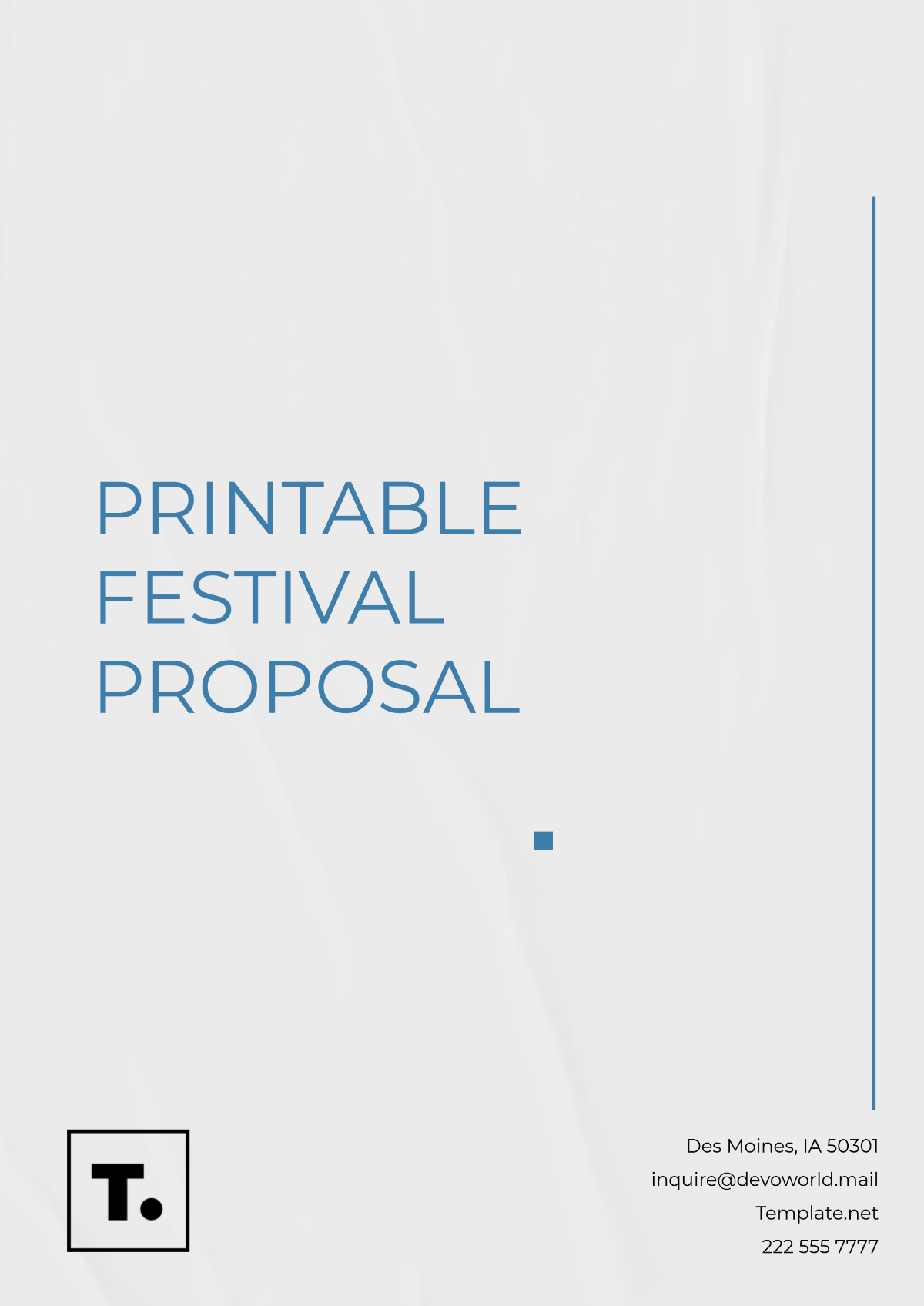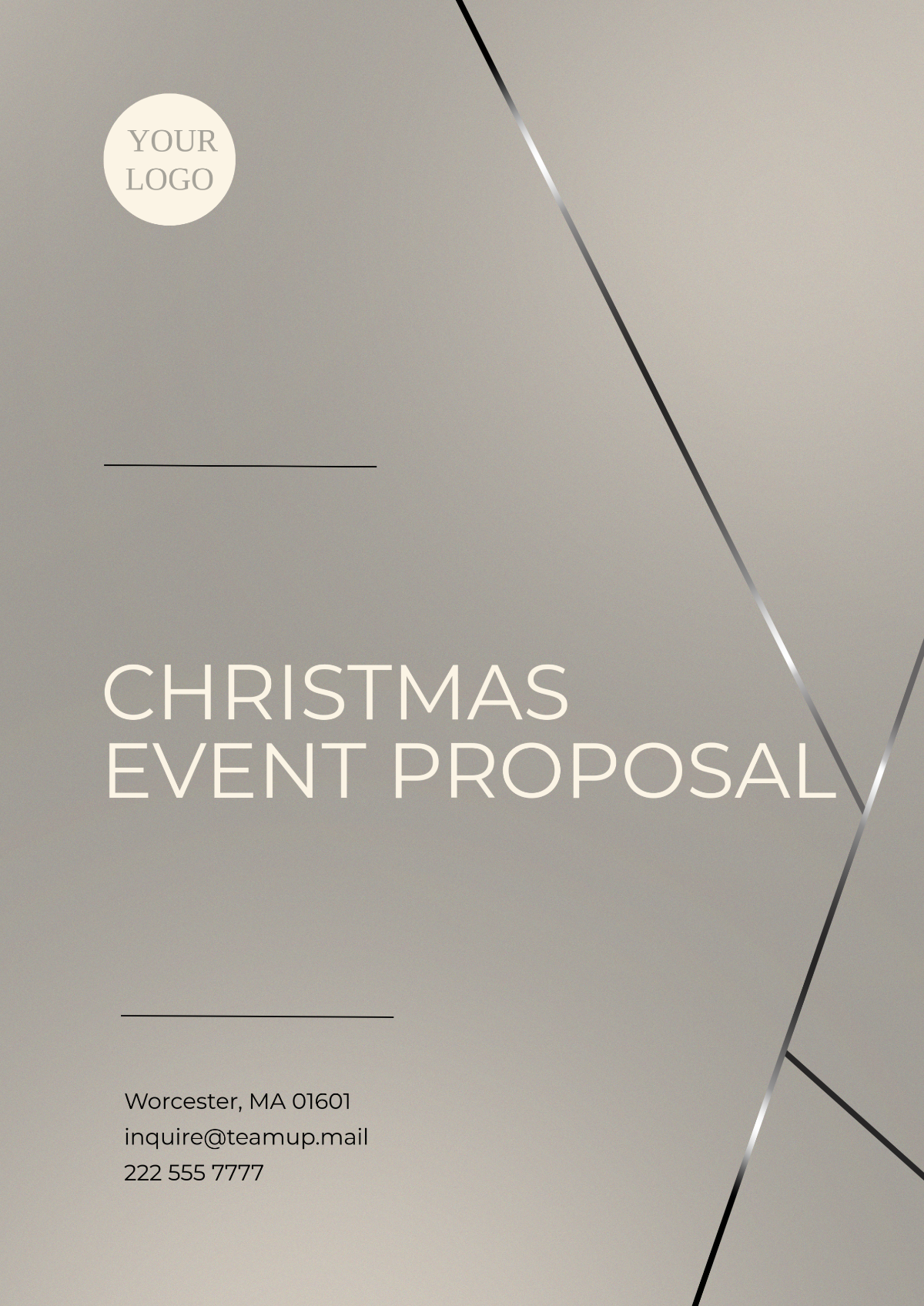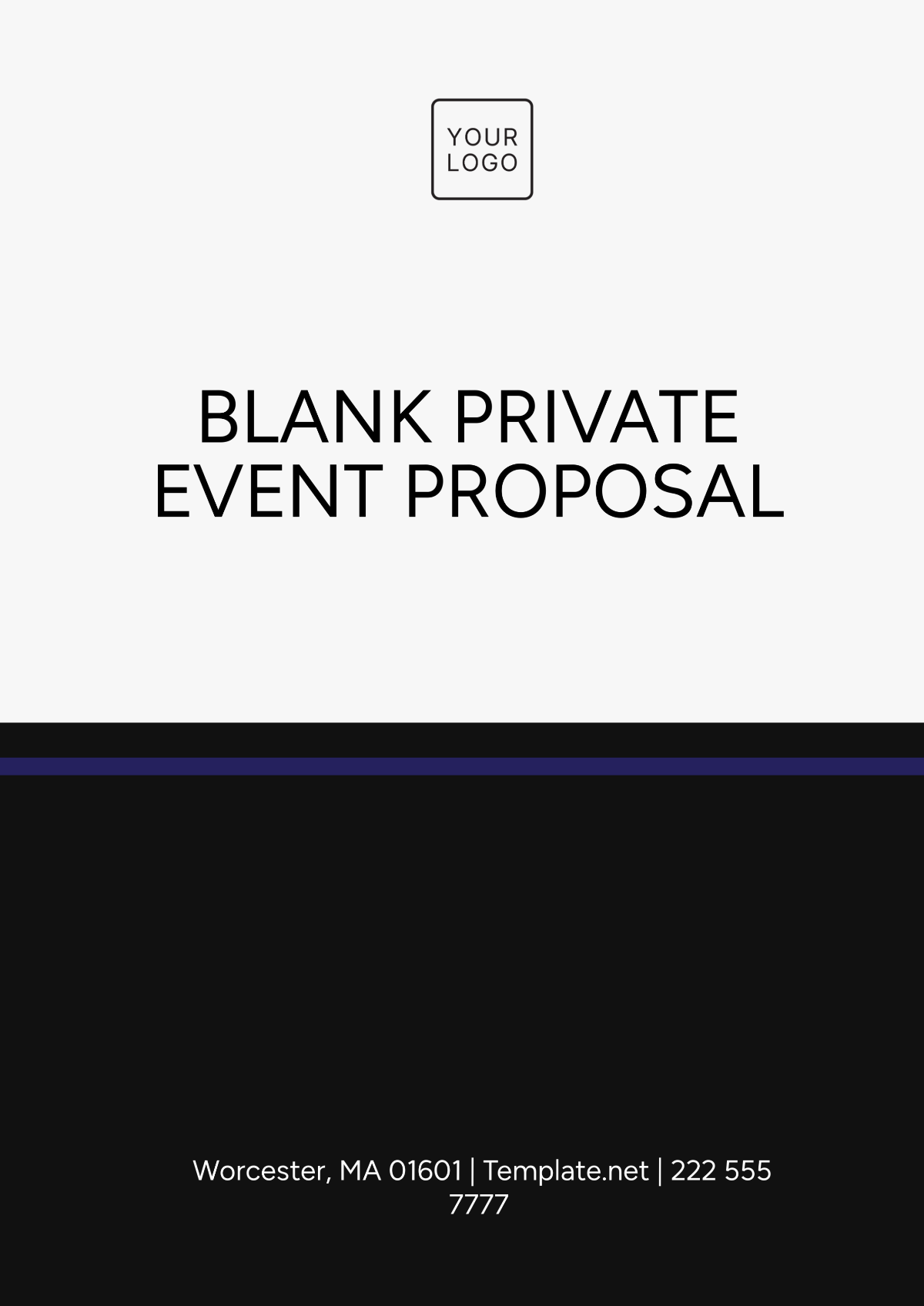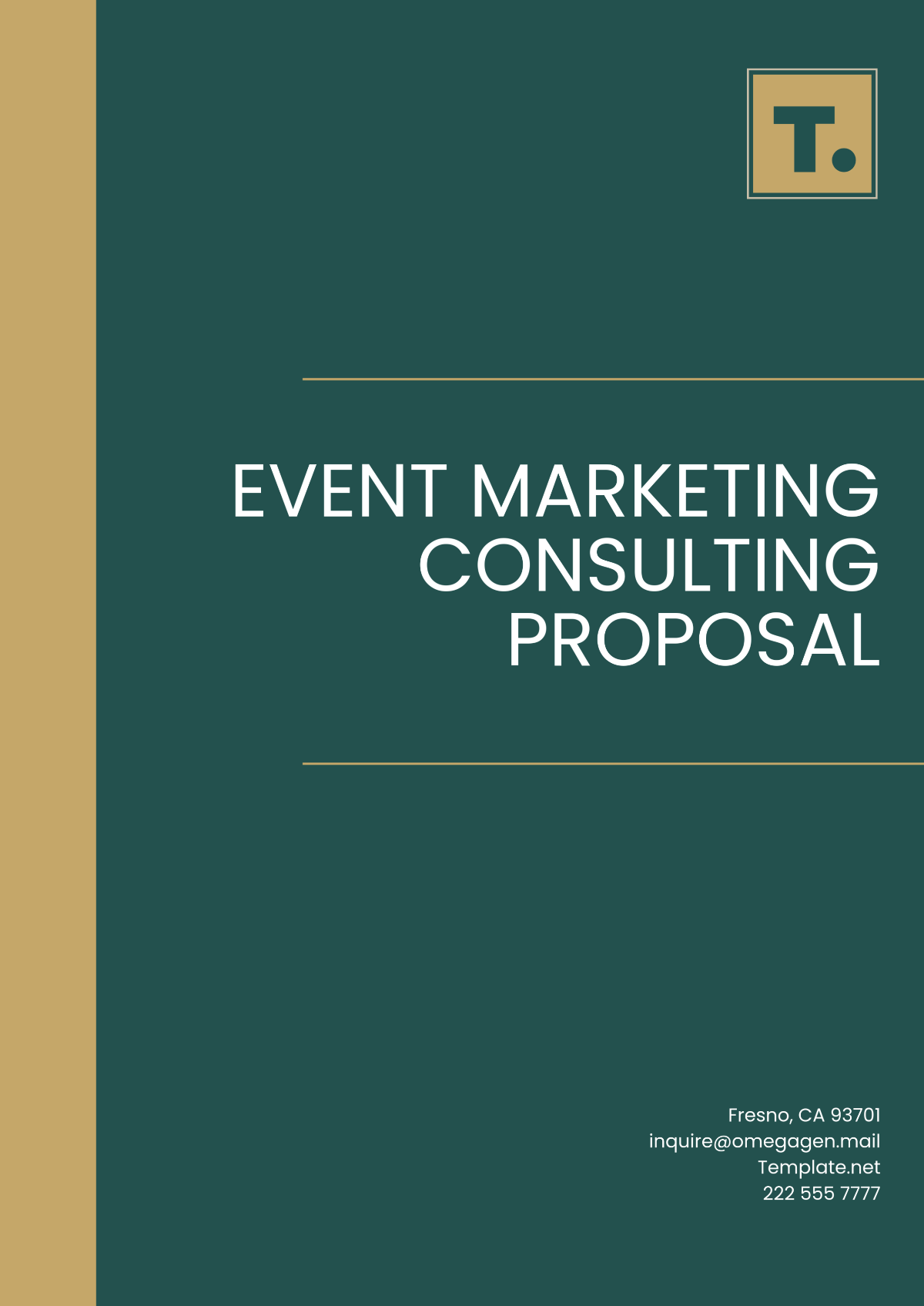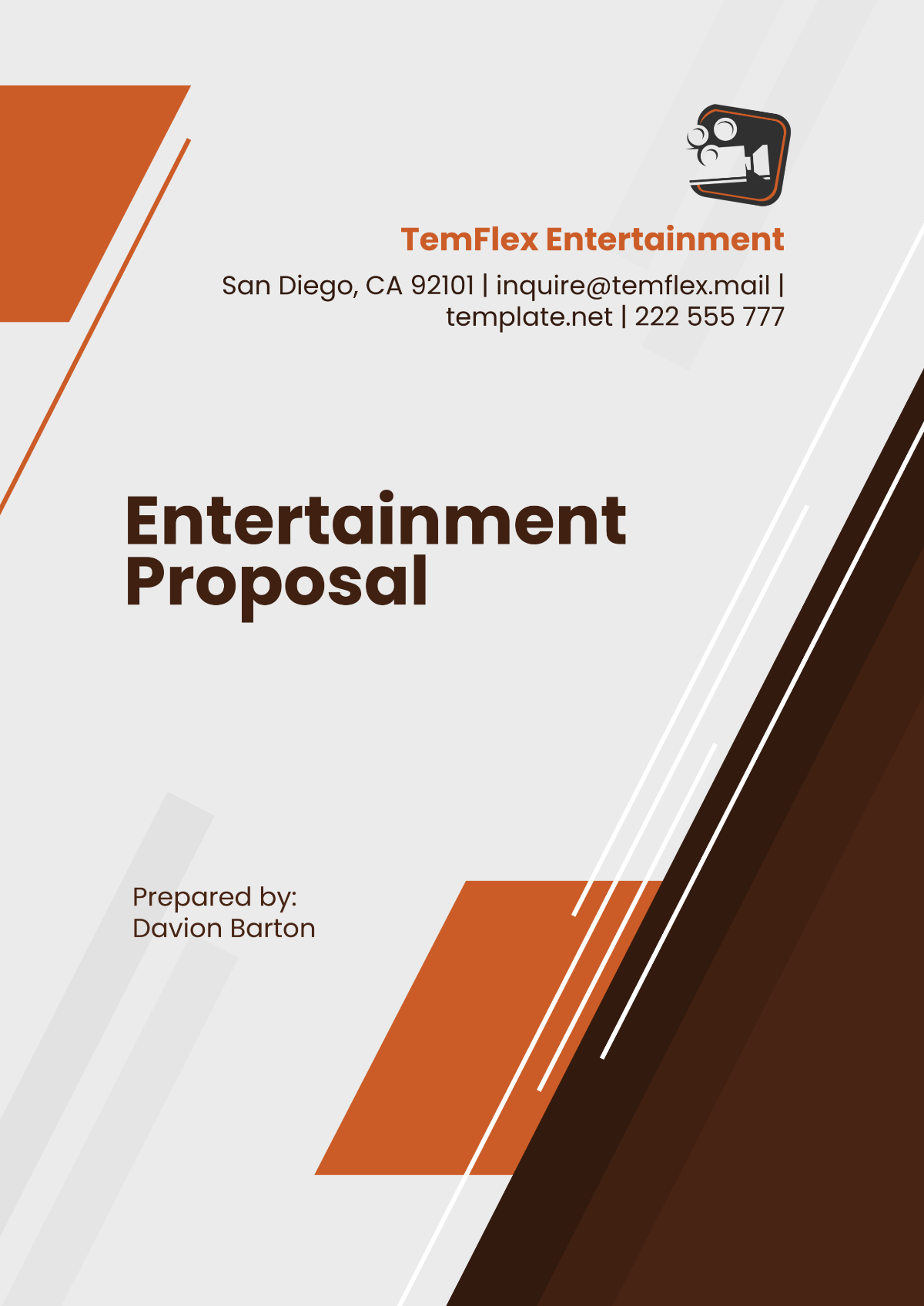Corporate Layout Event Proposal
1. Introduction
Introduce your company and highlight your expertise in planning corporate events. Include key accomplishments, unique strengths, and industry certifications or recognitions. Emphasize your commitment to delivering an exceptional experience, ensuring that each element aligns with the client’s brand identity and objectives.
2. Event Overview
Event Name: Proposed Event Name
Date(s): Proposed Event Date(s)
Location: Venue Details, such as location, capacity, amenities
Event Type: Conference, Workshop, Product Launch, Gala, etc.
Event Theme: Describe the concept, e.g., "Empowering Future Leaders" or "Innovating Tomorrow"
Provide a brief description of the event’s vision. Describe how the theme will be reflected throughout the event, from branding to design, decor, and agenda.
3. Objectives
Define specific goals that this event aims to achieve, such as:
Brand Engagement: Strengthening connections with key clients and industry leaders.
Product Awareness: Highlighting a new product or service and demonstrating its value.
Thought Leadership: Positioning your client as a leader in their industry.
Networking: Fostering valuable relationships among attendees.
Explain how each objective will be measured and achieved through event activities and attendee engagement.
4. Event Details
Theme Design Elements: Describe key design elements and color schemes that reflect the event theme.
Expected Attendance: Estimate number of attendees
Agenda Overview: High-level description of activities, including networking sessions, keynote addresses, and breakout workshops.
Logistics and Layout: Detailed layout for event flow, seating arrangements, accessibility, and signage.
Include a section on technology needs (e.g., live streaming, virtual engagement for remote attendees) and outline the registration process for a seamless attendee experience.
5. Target Audience
Define your target audience profile based on demographics and industry focus:
Industries Represented: List targeted industries
Professional Levels: Executive leaders, mid-level managers, etc.
Audience Needs: Describe the attendees’ goals, such as gaining insights, building connections, or discovering new solutions.
Consider adding attendee personas to tailor the experience to specific audience groups, ensuring the event resonates with their interests.
6. Event Program
Develop a comprehensive schedule that captures the flow of the day, from registration to closing remarks.
Sample Program Outline:
Time | Activity | Details |
|---|---|---|
9:00 AM | Registration & Check-in | Attendee welcome, badge distribution |
10:00 AM | Opening Remarks | Introduction by CEO/Executive |
10:30 AM | Keynote Presentation | "Innovating the Future" by [Speaker Name & Title] |
12:00 PM | Networking Lunch | Informal networking with catered lunch |
1:30 PM | Breakout Sessions | Various topics for specific interest groups |
3:00 PM | Panel Discussion | Industry experts on [Topic] |
4:30 PM | Closing Keynote | [Speaker’s Key Insight] |
5:00 PM | Cocktail Reception | Informal networking with refreshments and music |
7. Budget Estimate
Provide a detailed budget that includes cost breakdowns and justifications for major expenses.
Venue: $Amount - Details of venue rental, setup, and amenities.
Catering: $Amount - Catering costs, including meal options and refreshments.
Audio/Visual: $Amount - Equipment rentals and technical support.
Staffing: $Amount - Event coordinators, security, and on-site personnel.
Marketing & Promotion: $Amount - Digital marketing, print materials, and ads.
Décor & Theming: $Amount - Design elements, signage, and props.
Miscellaneous Costs: $Amount - Transportation, insurance, permits.
Total Estimated Budget: $[Total Amount]
8. Marketing & Promotion Plan
Pre-Event Marketing: Social media teasers, email campaigns, blog posts, and influencer partnerships to drive registration.
Media Outreach: Engaging with industry publications, press releases, and collaborations to build event buzz.
Attendee Engagement: Strategies to keep attendees informed, like countdowns, app notifications, and sneak-peek videos.
Post-Event Promotion: Sharing event highlights, recordings, and testimonials.
9. Sponsorship & Partnerships
Outline different sponsorship levels and corresponding benefits:
Title Sponsor: Exclusive branding throughout the event, logo on all marketing materials, and prime speaking slots.
Session Sponsors: Branding during specific breakout sessions or workshops.
Networking Sponsor: Branding at all networking sessions, such as lunch and cocktail reception.
Each level should include clear benefits, visibility opportunities, and a projected ROI for sponsors.
10. Risk Management & Contingency Plan
Identify key risks associated with the event (e.g., weather, technical issues, attendee safety) and propose backup plans. Outline an emergency communication protocol and provide a list of emergency contacts.
11. Post-Event Analysis
Describe how you will evaluate the event’s success. This could include:
Surveys: Attendee feedback forms post-event.
Engagement Metrics: Analyzing social media mentions, app engagement, and live-streaming views.
ROI Measurement: Calculating lead generation, new partnerships, and brand impact.
You can also provide a post-event report that includes lessons learned and recommendations for future events.
12. Conclusion
Summarize the key elements of the proposal, reiterate your commitment to delivering a memorable and successful event, and invite the client to take the next steps. Offer a clear call to action, such as scheduling a follow-up meeting or confirming the proposal.
Signature
 [Your Name]
[Your Name]










